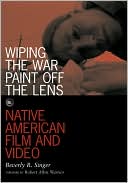Category Books
- Fiction Books & Literature
- Graphic Novels
- Horror
- Mystery & Crime
- Poetry
- Romance Books
- Science Fiction & Fantasy
- Thrillers
- Westerns
- Ages 0-2
- Ages 3-5
- Ages 6-8
- Ages 9-12
- Teens
- Children's Books
- African Americans
- Antiques & Collectibles
- Art, Architecture & Photography
- Bibles & Bible Studies
- Biography
- Business Books
- Christianity
- Computer Books & Technology Books
- Cookbooks, Food & Wine
- Crafts & Hobbies Books
- Education & Teaching
- Engineering
- Entertainment
- Foreign Languages
- Game Books
- Gay & Lesbian
- Health Books, Diet & Fitness Books
- History
- Home & Garden
- Humor Books
- Judaism & Judaica
- Law
- Medical Books
- New Age & Spirituality
- Nonfiction
- Parenting & Family
- Pets
- Philosophy
- Political Books & Current Events Books
- Psychology & Psychotherapy
- Reference
- Religion Books
- Science & Nature
- Self Improvement
- Sex & Relationships
- Social Sciences
- Sports & Adventure
- Study Guides & Test Prep
- Travel
- True Crime
- Weddings
- Women's Studies
Wiping the War Paint Off the Lens » (1st Edition)

Authors: Beverly R. Singer
ISBN-13: 9780816631612, ISBN-10: 0816631611
Format: Paperback
Publisher: University of Minnesota Press
Date Published: October 2001
Edition: 1st Edition
Author Biography: Beverly R. Singer
Book Synopsis
Native Americans have thrown themselves into filmmaking since the mid-1970s, producing hundreds of films and videos, and their body of work has had great impact on Native cultures and filmmaking itself. With their cameras, they capture the lives of Native people, celebrating community, ancestral lifeways, and identity. Not only artistic statements, the films are archives that document rich and complex Native communities and counter mainstream media portrayals.
Wiping the War Paint off the Lens traces the history of Native experiences as subjects, actors, and creators, and develops a critical framework for approaching Native work. Singer positions Native media as part of a larger struggle for "cultural sovereignty"-the right to maintain and protect cultures and traditions. Taking it out of a European-American context, she reframes the discourse of filmmaking, exploring oral histories and ancient lifeways inform Native filmmaking and how it seeks to heal the devastation of the past. Singer's approach is both cultural and personal, provides both historical views and close textual readings, and may well set the terms of the critical debate on Native filmmaking.
Beverly R. Singer is a filmmaker and director of the Alfonso Ortiz Center for Intercultural Studies at the University of New Mexico.
Library Journal
A filmmaker and director of the Alfonso Ortiz Center for Intercultural Studies at the University of New Mexico, Singer heartily advocates with occasional rhetorical flashes suggesting that the titular "war paint" can be found in her pen the growth of Native Americans in film and video making. She surveys some previously published facts and observations on Native Americans in film, details selected legislation and social movements in the 1960s and 1970s, gives personal, anecdotal information, presents a transcript of the narration of her autobiographical A Video Book, and offers cursory biographical sketches of over 20 filmmakers with Native American origins. Descriptive discussions of six films by Native Americans include Randy Redhorse's High Horse (1994) and Arlene Bowman's Navajo Talking Picture (1984), about a Navajo woman steadfastly unwilling to be filmed by her insistent granddaughter, the director. The book is not formed by any noticeable discipline, and its diffuse subject matter and cacophony of tones add to its overall lack of focus. Robert Allen Warrior's foreword states that Singer has taken "important steps toward leading" a discussion of the changing meanings of being an Indian in America. More steps are needed. Recommended for special collections. Ann Fey, Rockland Community Coll.,, Suffern Copyright 2001 Cahners Business Information.
Table of Contents
| Foreword | ||
| Prologue in Three Parts | ||
| Acknowledgments | ||
| Introduction: Thinking Indian Thoughts | 1 | |
| 1 | Bringing Home Film and Video Making | 5 |
| 2 | The War-Painted Years | 14 |
| 3 | Toward Independence | 23 |
| 4 | Native Filmmakers, Programs, and Institutions | 33 |
| 5 | On the Road to Smoke Signals | 61 |
| Conclusion: Continuing the Legacy | 92 | |
| Notes | 101 | |
| Index | 107 |
Subjects
 Books on Film
Books on Film  Film History & Criticism
Film History & CriticismEntertainment
 Media
Media  Ethnic & Minority Studies - Media Studies
Ethnic & Minority Studies - Media StudiesNonfiction
 Social Sciences
Social Sciences  Ethnic & Minority Studies
Ethnic & Minority StudiesNonfiction
 Social Sciences
Social Sciences  Media & Communications
Media & CommunicationsNonfiction
 Social Sciences
Social Sciences  Native American Studies
Native American StudiesScience & Nature
 Social Sciences
Social Sciences  Ethnic & Minority Studies
Ethnic & Minority StudiesScience & Nature
 Social Sciences
Social Sciences  Media & Communications
Media & CommunicationsScience & Nature
 Social Sciences
Social Sciences  Native American Studies
Native American StudiesSocial Sciences
 Ethnic & Minority Studies
Ethnic & Minority Studies  Ethnic & Minority Studies - Media Studies
Ethnic & Minority Studies - Media StudiesSocial Sciences
 Media & Communications
Media & Communications  Ethnic & Minority Studies - Media Studies
Ethnic & Minority Studies - Media StudiesSocial Sciences
 Native American Studies
Native American Studies  General & Miscellaneous Native American Studies
General & Miscellaneous Native American StudiesNonfiction
 Entertainment
Entertainment  Books on Film
Books on FilmNonfiction
 Entertainment
Entertainment  Media
Media
